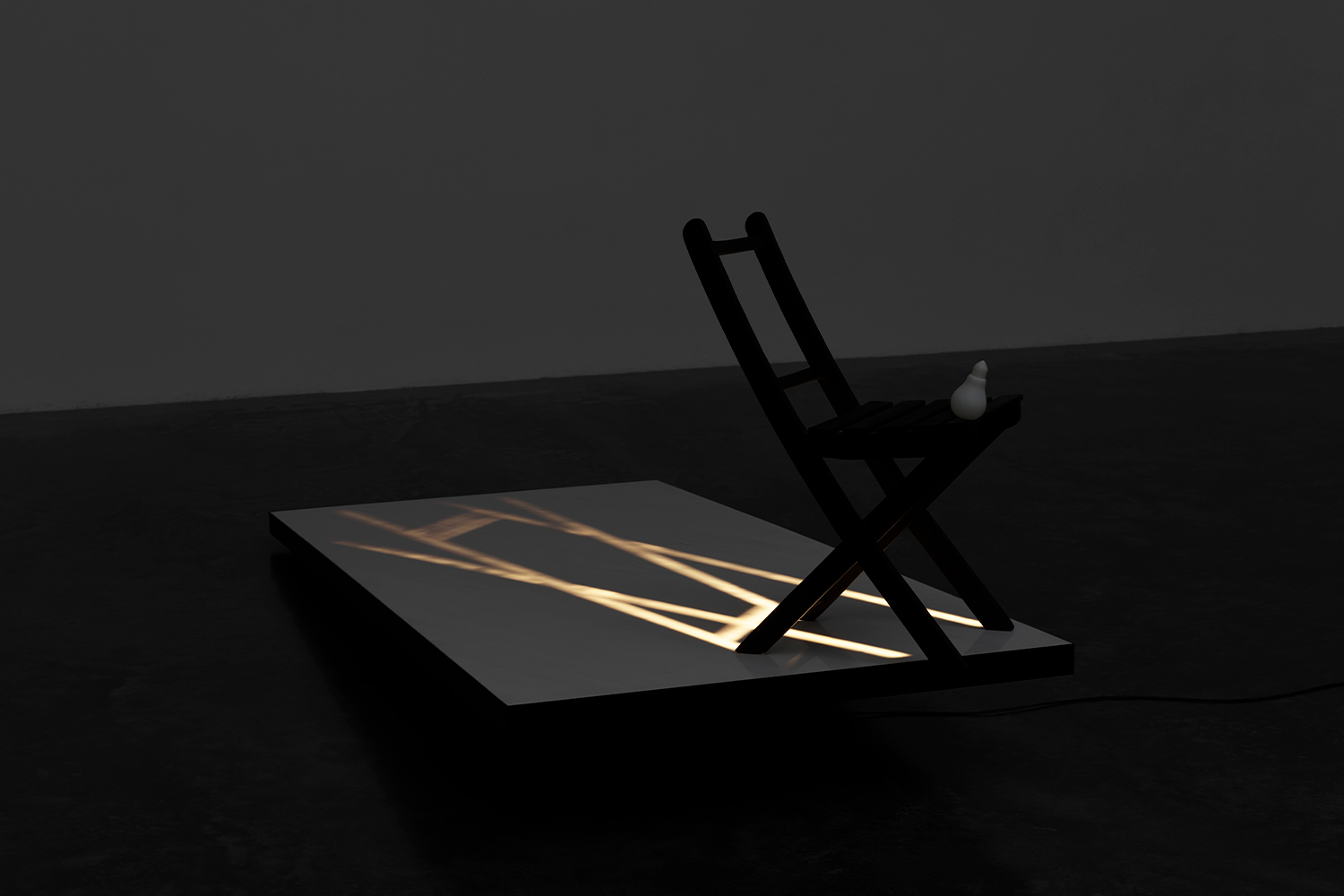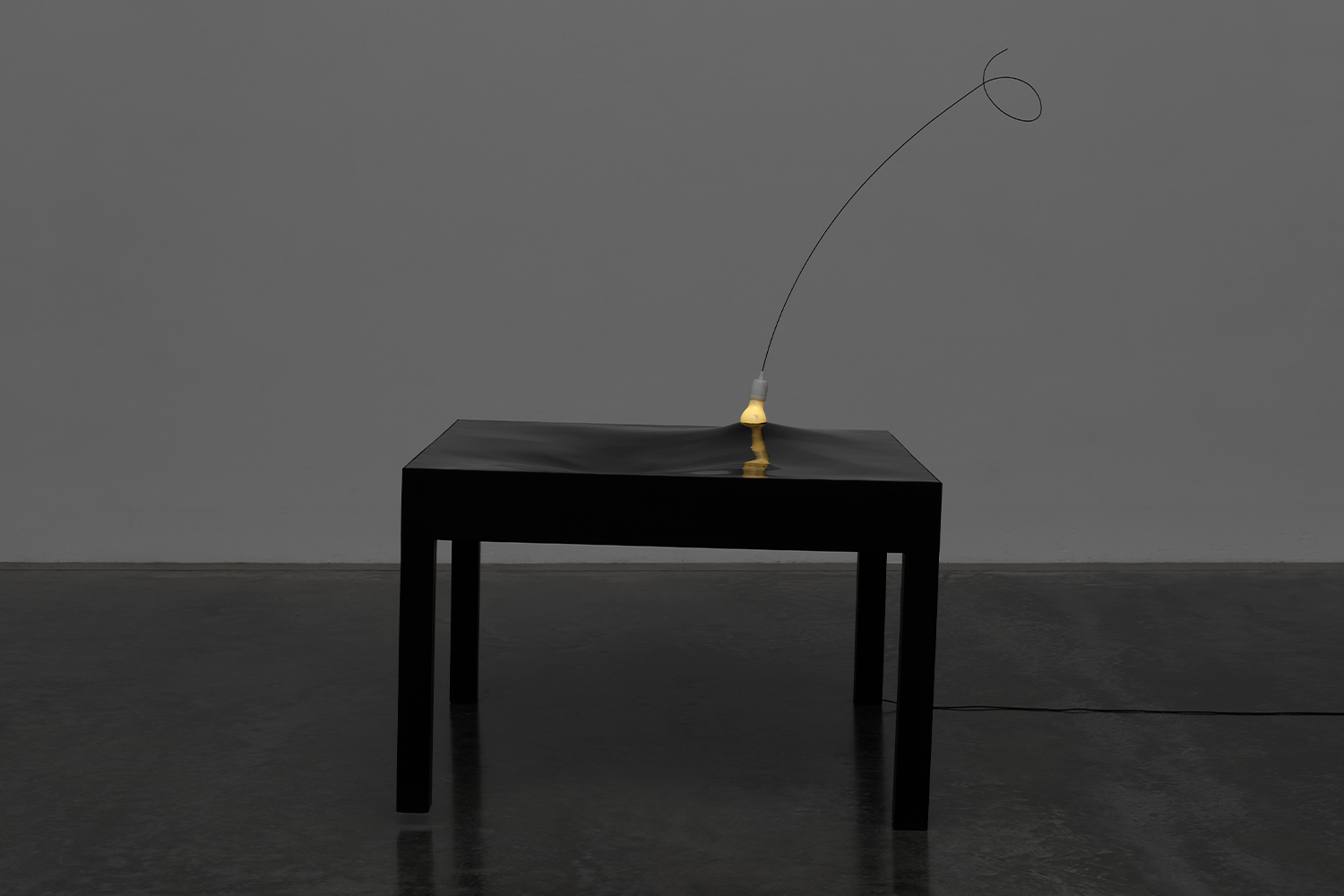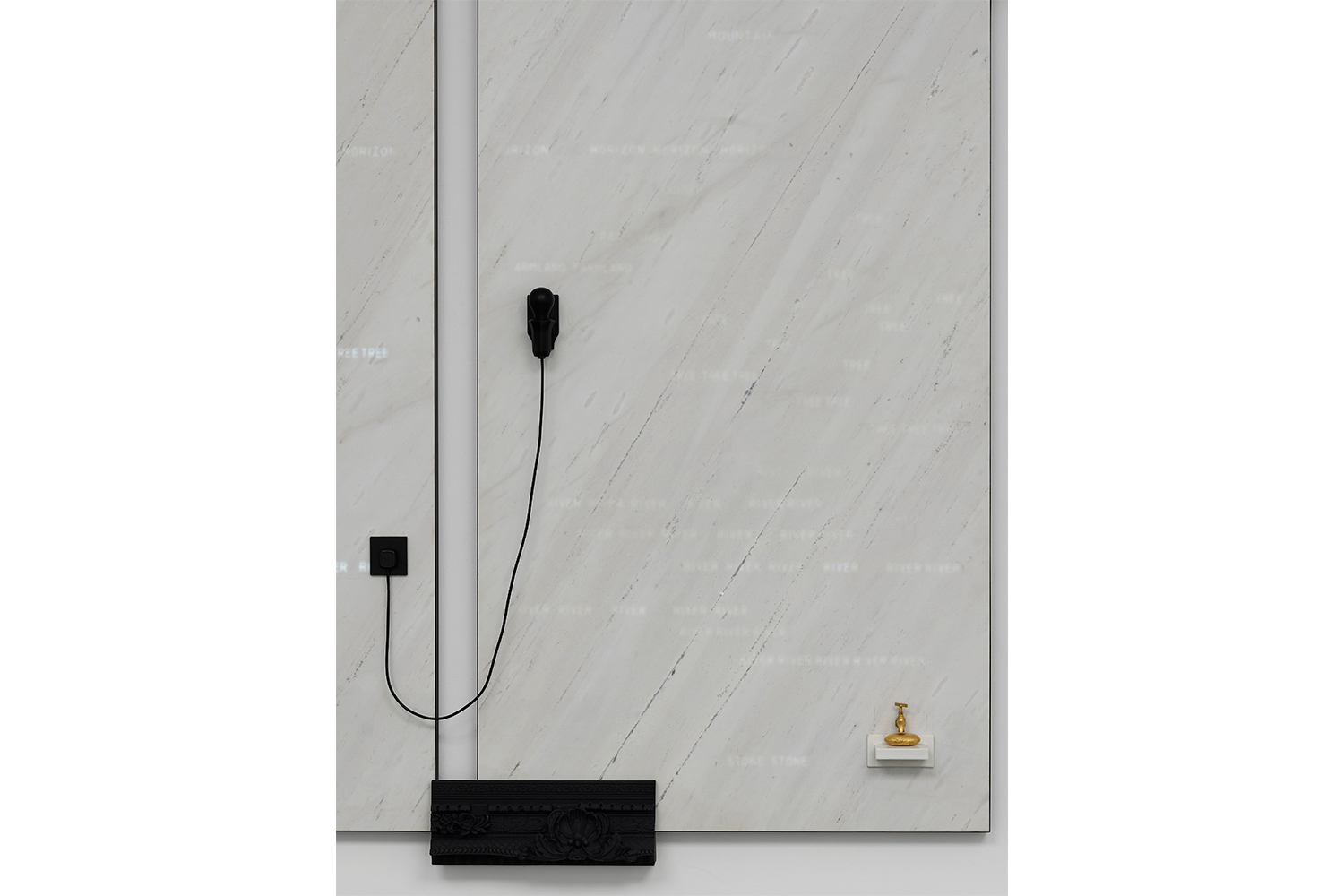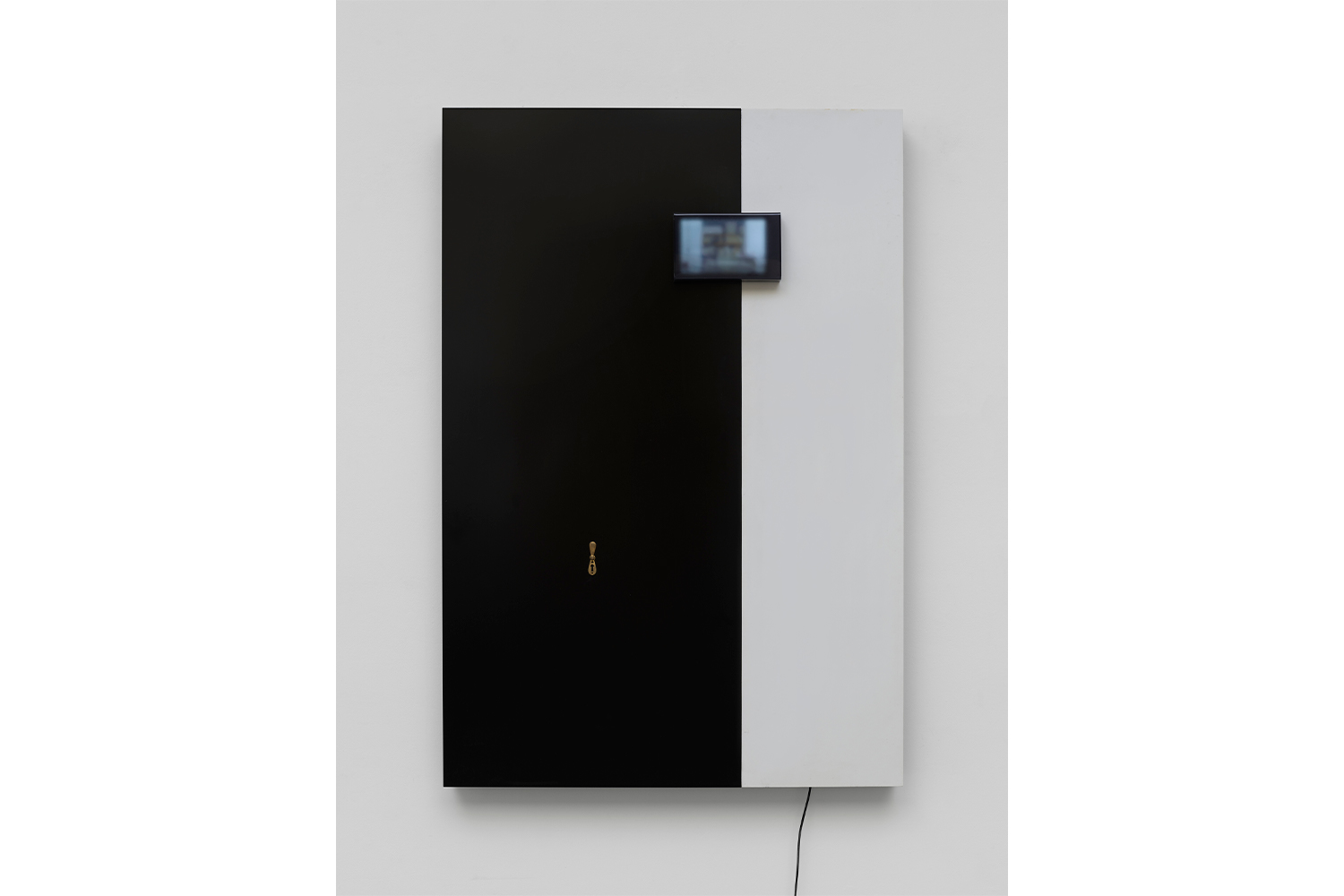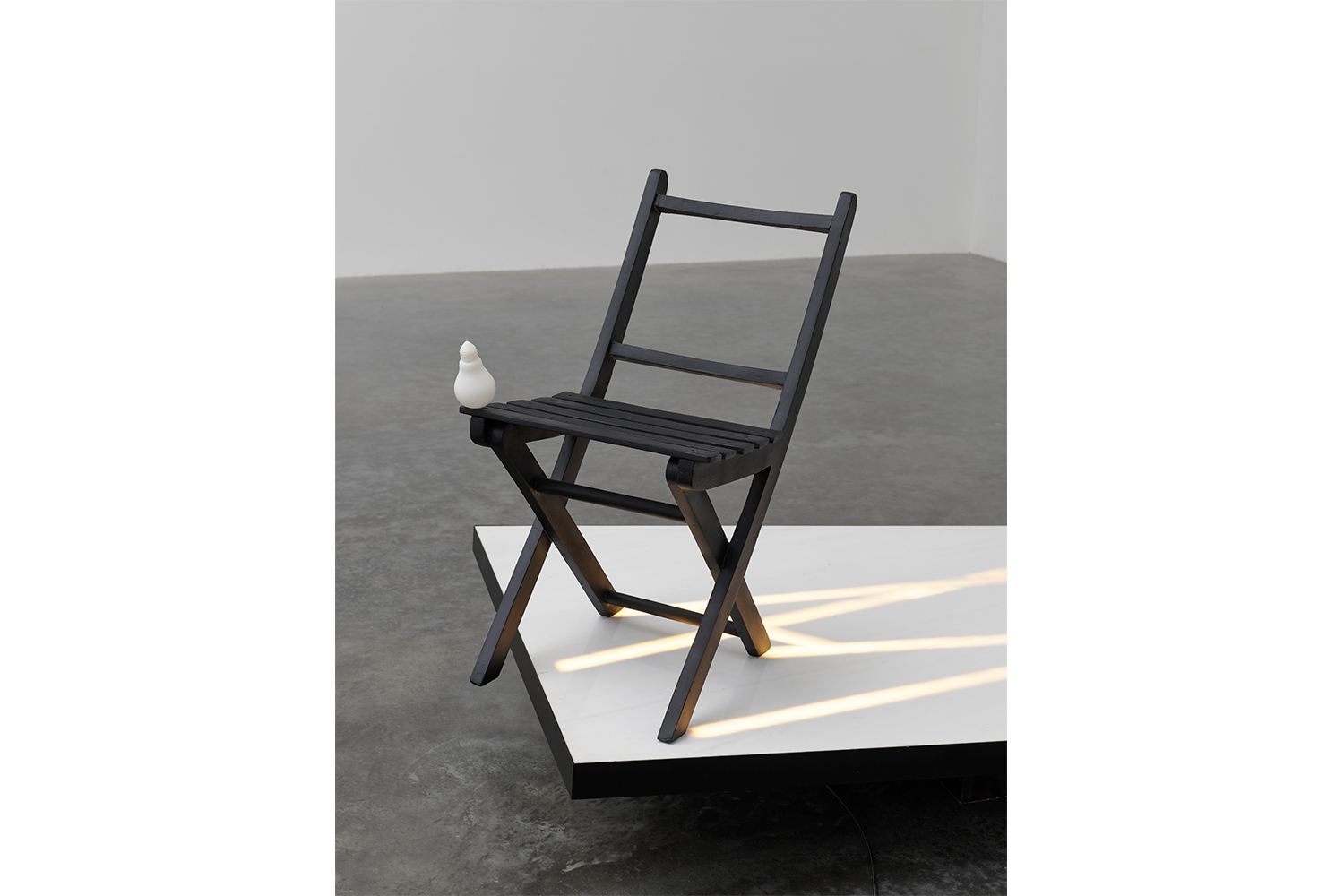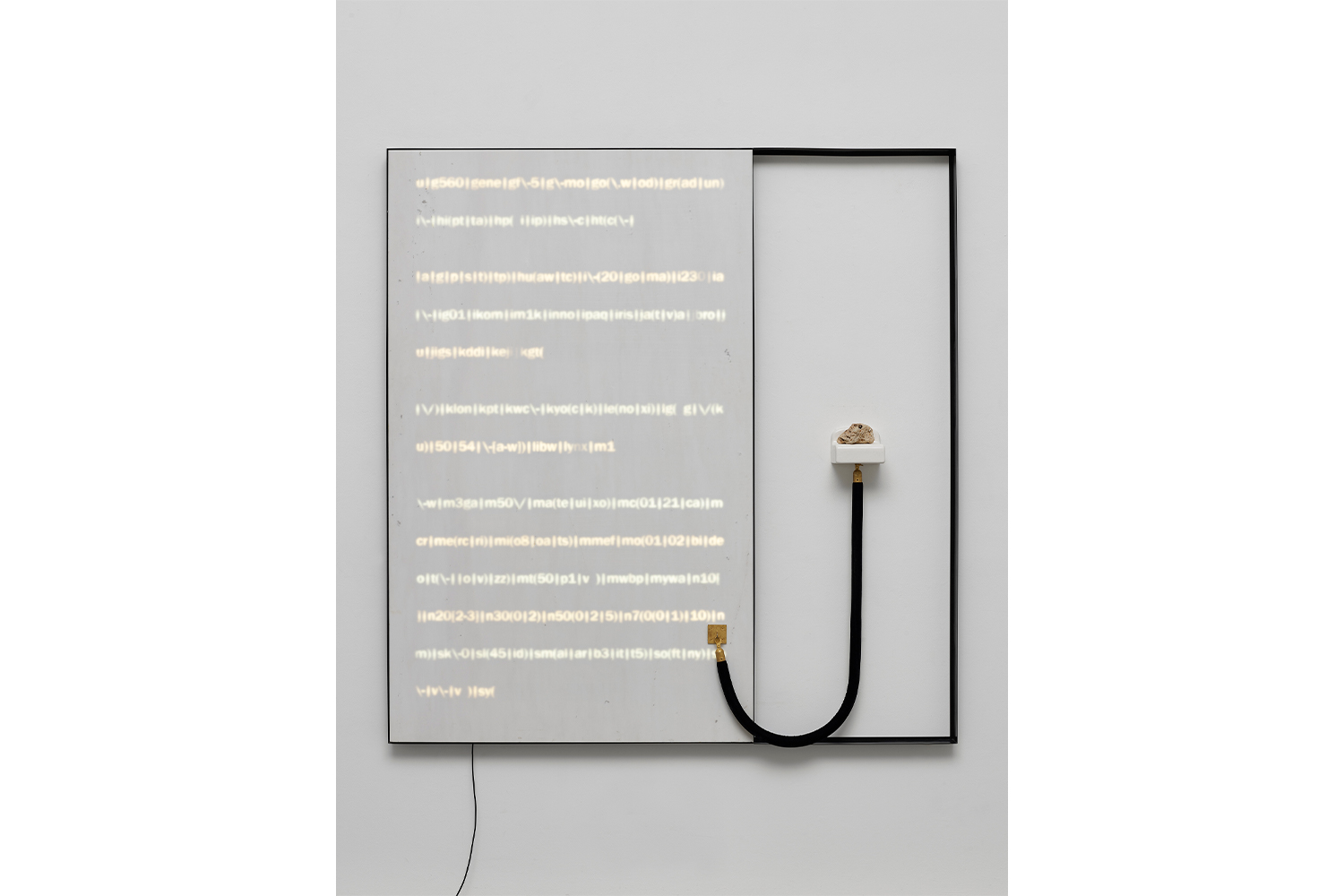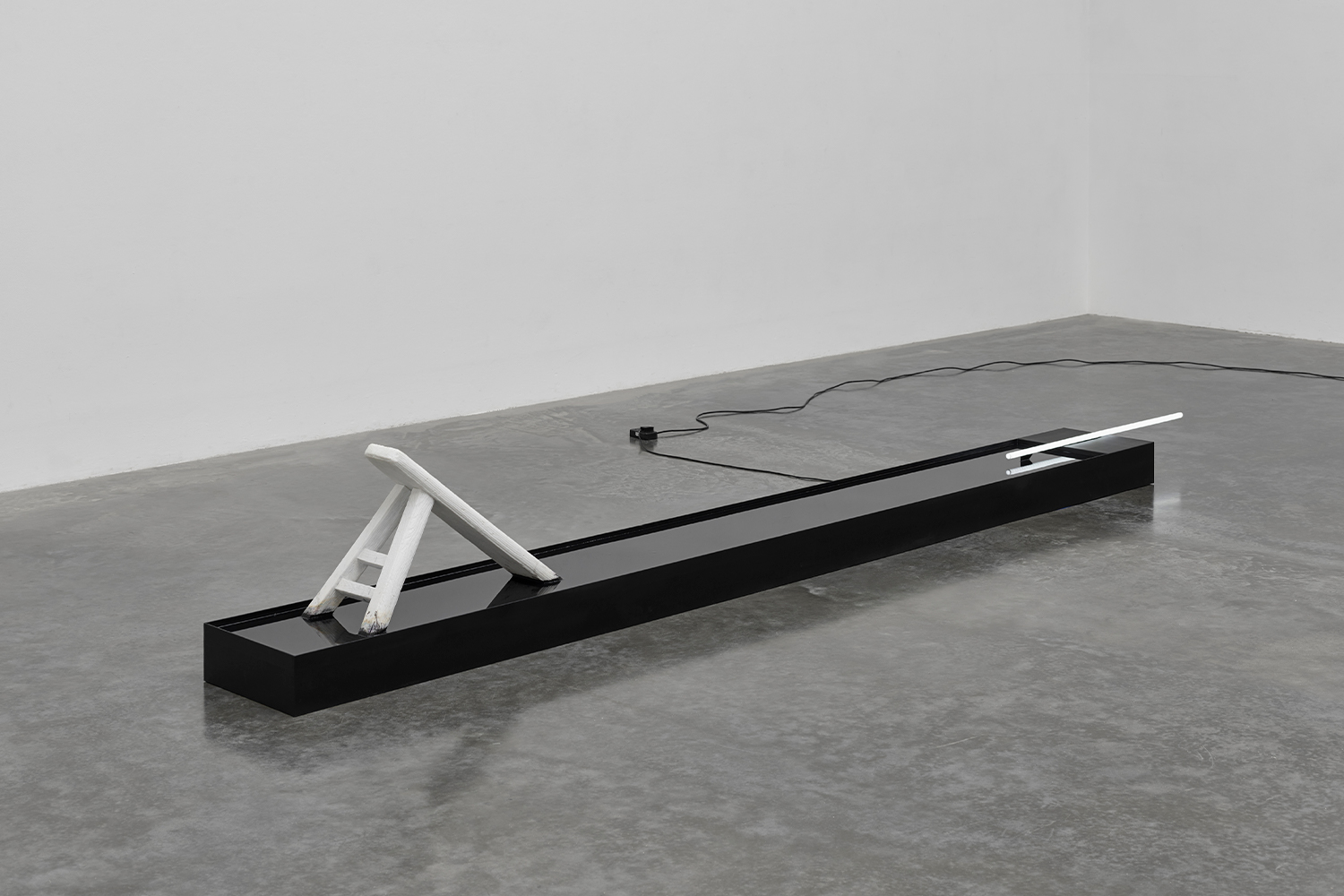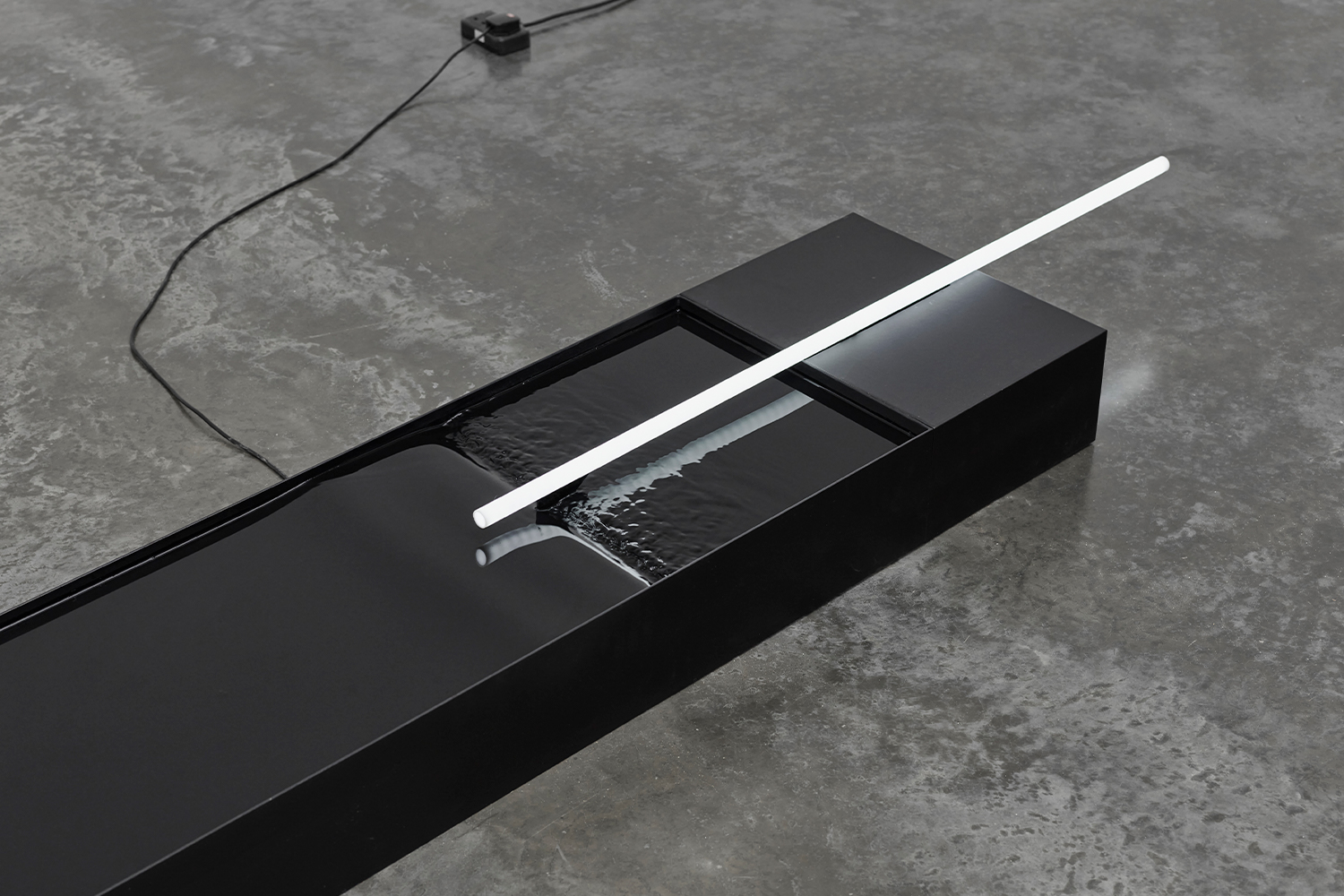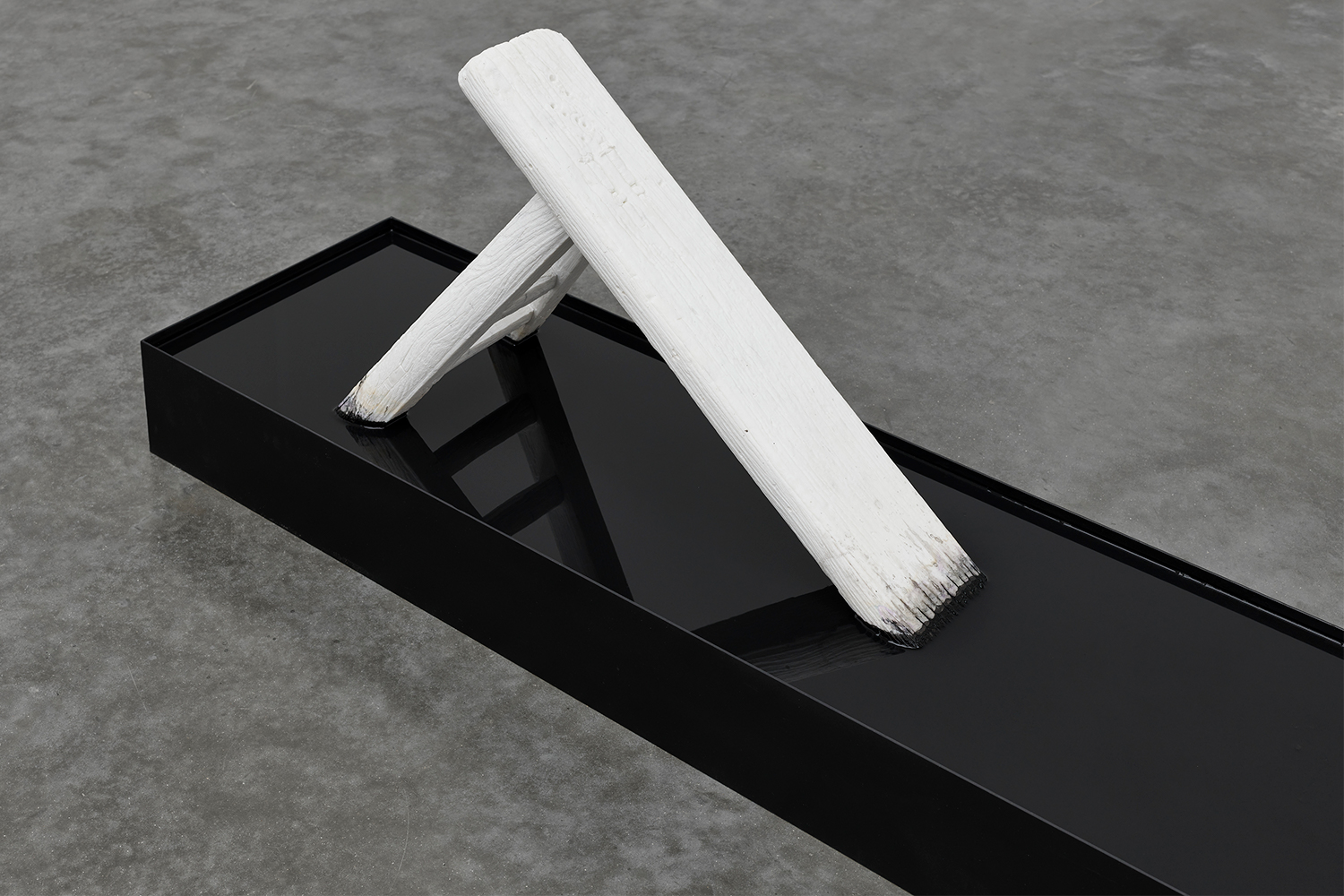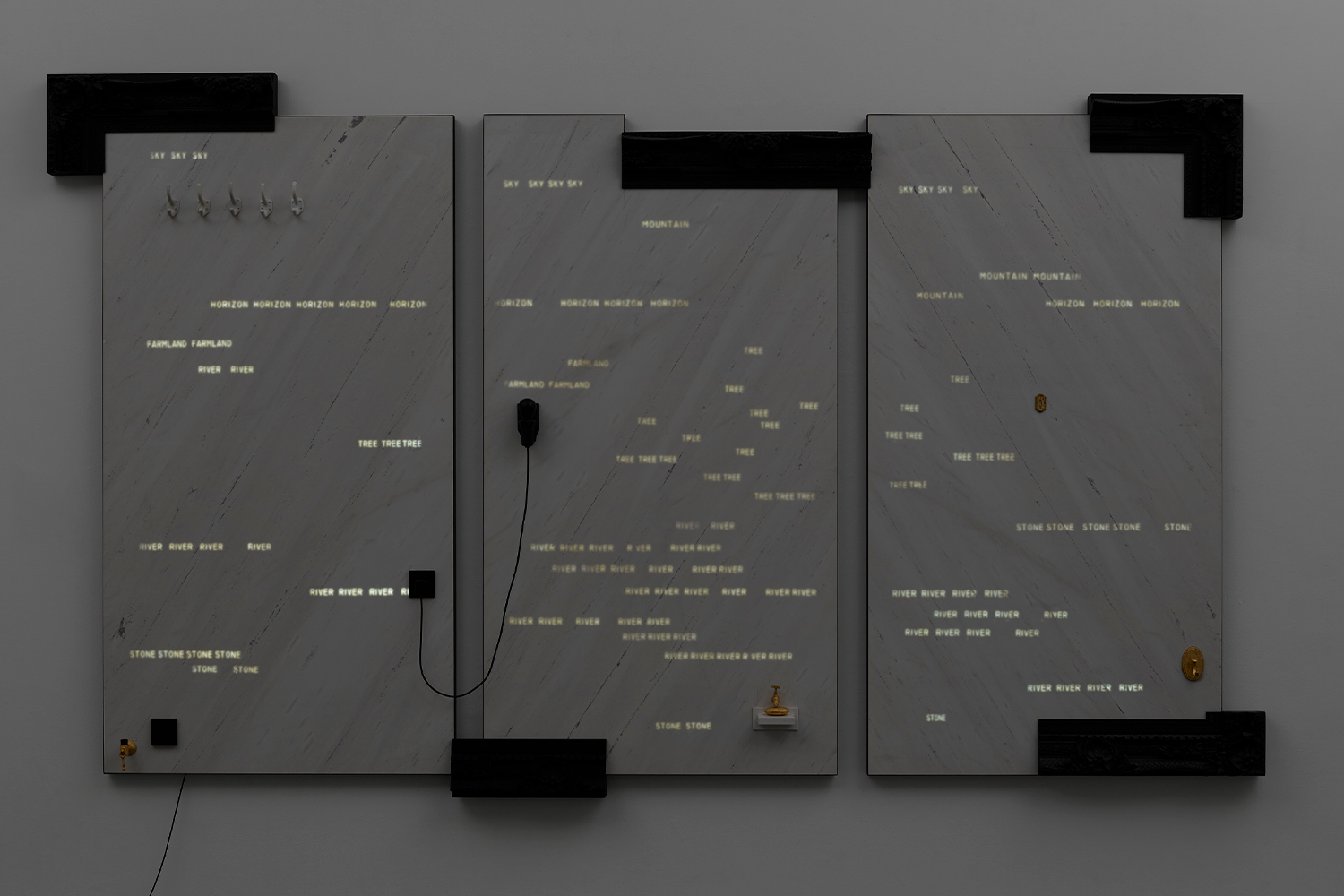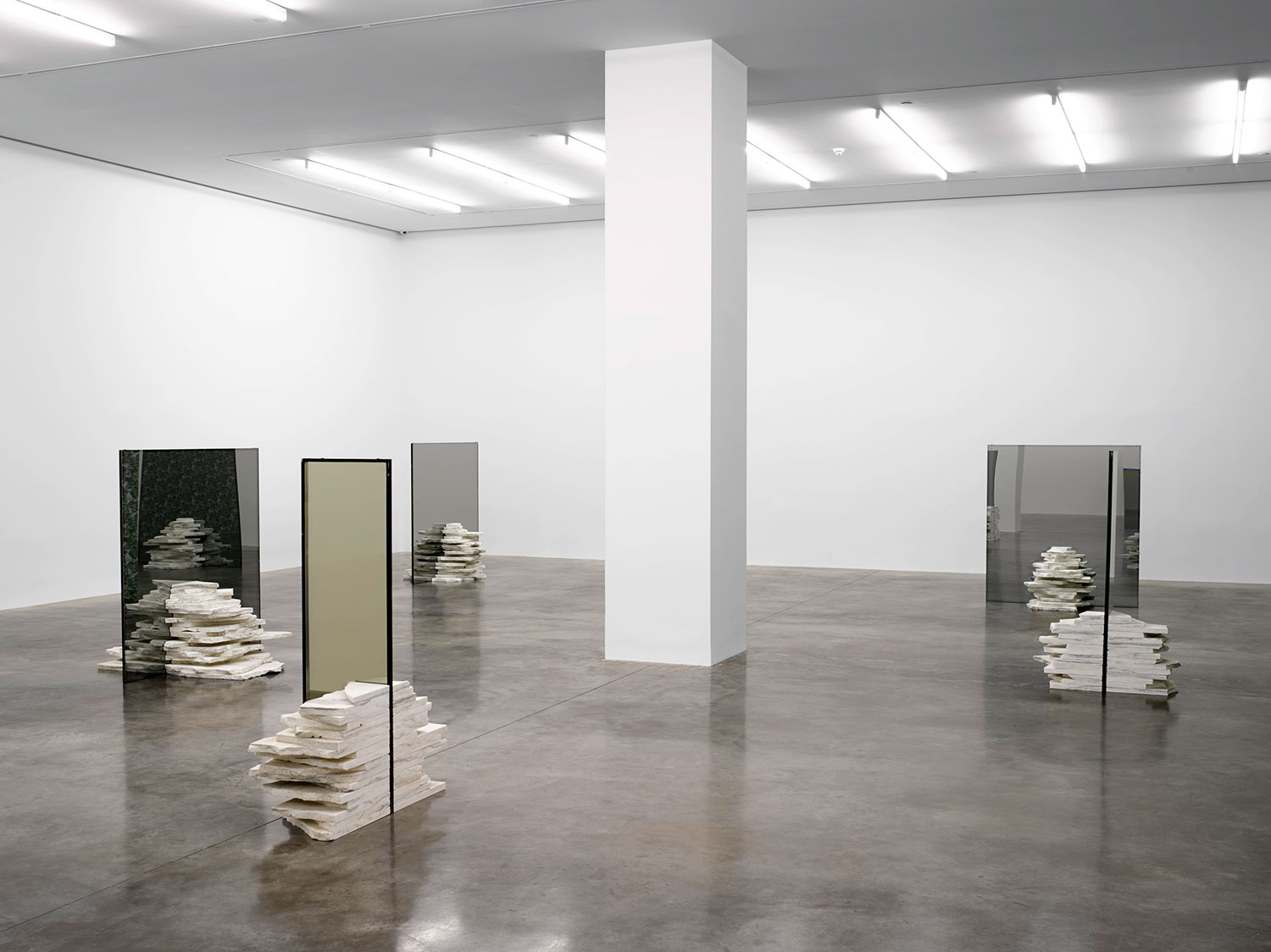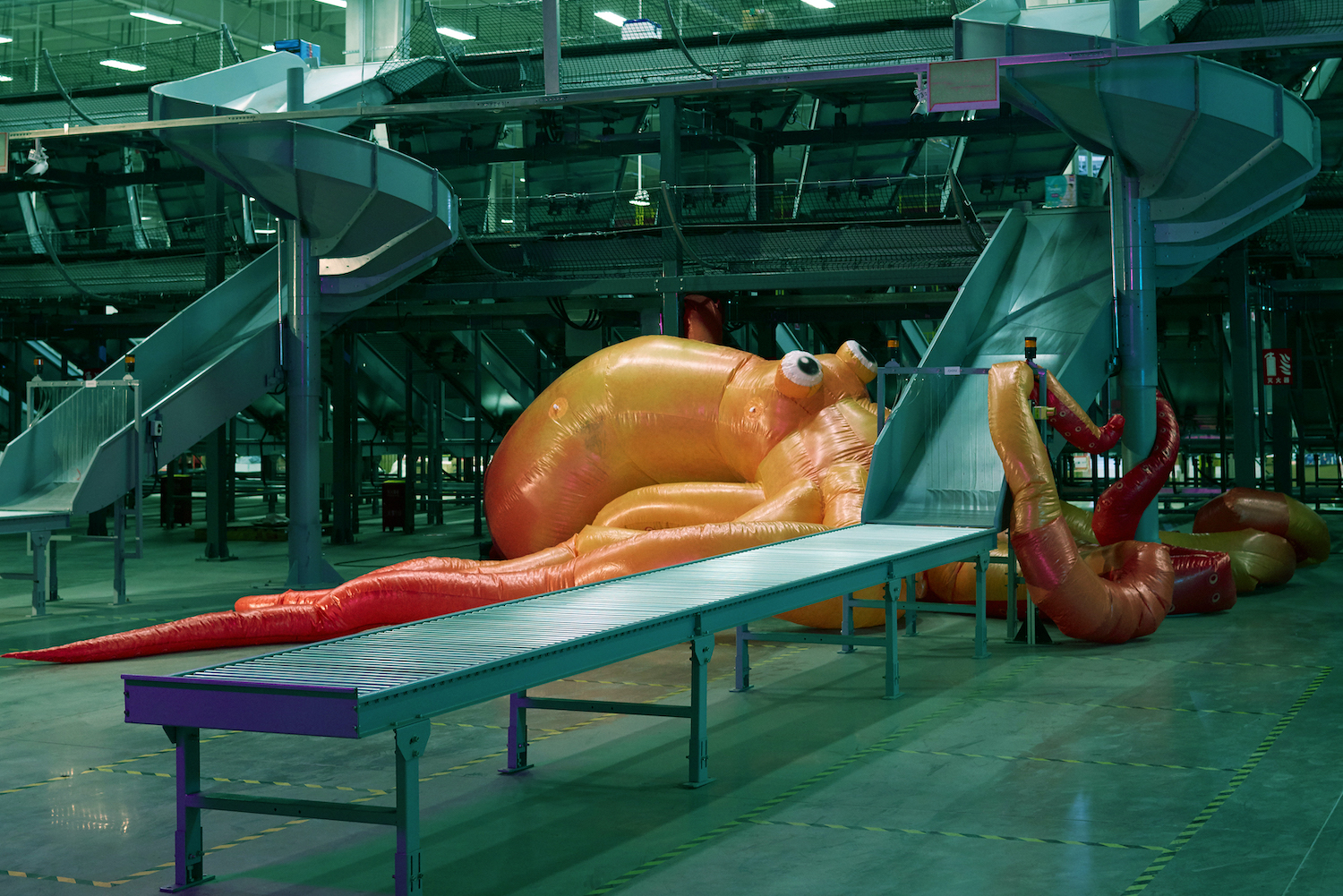In his solo exhibition ”In-Between” at White Cube, London, Wang Gongxin expands on the central thesis of Japanese writer Tanizaki Junichiro’s 1933 essay In Praise of Shadows. In this influential text, the author argued that light is used differently in the East and West: Western cultures looking for illumination and clarity; East Asian cultures embracing shadow and subtlety. Exploring cultural connections between light and mindsets, Wang also interrogates Japanese post-war architect Kurokawa Kisho’s concept of “grey space,” where distinctions between inside and outside, artificial and natural, and individual and collective are blurred.
Born in 1960 in Beijing, Wang is a pioneering video and media artist, one of the first in China to use digital special effects who, in 1999, founded Loft, the earliest media art space in China. Wang began his career as a representational painter but credits his time and education in the United States, beginning in the late 1980s, with shifting his focus to new forms and the study of creativity itself.
The series of 13 multimedia works presented in this exhibition reflect Wang’s ongoing investigation of the differences between his native China and the United States. The new work also extends the artist’s longstanding interest in creating works of art that involve tightly controlled elements yet are open to unexpected outcomes through their interactions with gallery visitors. More broadly, these concerns address the complexity of life in a globalised world, and the relationship between perceptual phenomenon and the human condition.
Swinging Gray (2021) is a kinetic video installation through which Wang explores indeterminate, changeable states – both physical and perceptual. Two glowing, 3D- printed light bulbs, each fitted with a video camera, swing like pendulums across pools of water, one dyed black, the other white. As the bulbs skim the pools, they affect the illumination of the surrounding space, while their cameras capture the visitors from constantly changing angles. These images are sent by live feed to two rows of 20 monitors, mounted on either side of the gallery’s longest walls, with the configuration of monitors ranging from high-contrast and dark screens at one end to low-contrast and bright at the other. During the run of the exhibition, splashes from the bulbs create a small exchange of liquid between the adjacent pools, so that neither of them will remain completely black nor white. Dynamic and mutable, Swinging Gray enacts multiple states between black and white, stability and change and perceiver and perceived.
Other works on view employ a similar variety of technologies and media, including carved marble, video screens and neon lights, as with Readable Scenery (2019), which combines elements of traditional Chinese landscape painting and Western conceptual art. Three marble panels bear words associated with landscapes, including ‘horizon’, ‘river’, and ‘farmland’, readable only when illuminated by a series of internal lights. Mounted on the work’s smooth marble surfaces are a variety of 3D-printed representations of commonplace objects, among which are sections of ornate picture frames, a light bulb and electrical cord, a spigot and bar of soap. The row of real coat hangers located in the upper left-hand corner of the work, Wang says, is a nod to Trap, the famous 1917 readymade by Marcel Duchamp fashioned from the same type of hanger.
The kinetic sculpture Perpetrator (2020), installed on the gallery floor, sets in motion an interplay between forms and materials. Resting in one end of a trough-like basin of water dyed black, and calling to mind the forms of 1960s Minimalist sculpture, is a piece of white-marble precisely carved to resemble part of a traditional Chinese wooden bench. At the work’s other end, a submerged, motorised actuator moves a LED tube, sending an inky wave running the length of the water. Until it comes to rest by the seat of the bench, this movement of liquid creates a mesmerising interplay of reflected light and undulating form.
In the two-panel work Mover Light (2020), the viewer is pulled in by way of a tiny camera hidden in a keyhole embedded in a black panel, which sends images of spectators to a small, frosted video screen located over the gap between the black and white panels. Opened and closed by a motorised mechanism, this gap reveals and conceals a vertical line of bright light that illuminates the audience’s interactions with the work, once again creating a dynamic interchange between the work’s own movement and that of the spectator.
Always closely connected to the spirit of his time and to his two artistic bases of China and America, Wang explains his methodology as follows: ‘I have the stubborn belief that shifts in the form of art through time must be closely connected to real life, social environment and existential condition of people in the present.’


